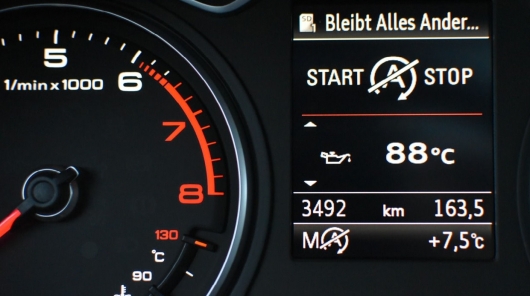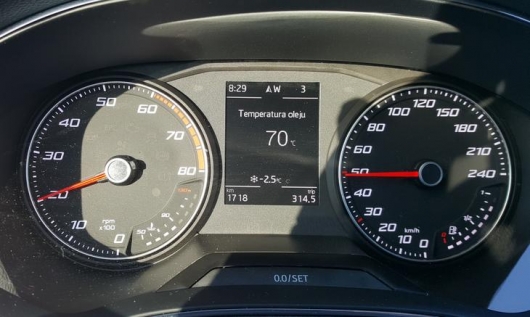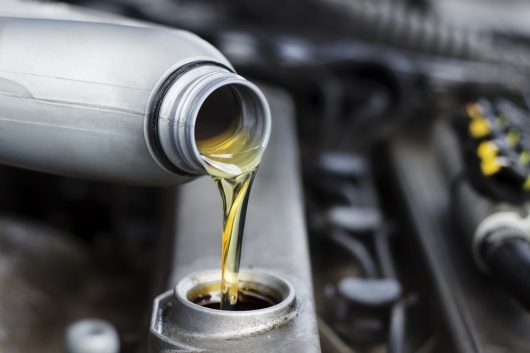How to warm up the car engine before you can drive at high speeds? Answers expert
How much you need to drive on a cold engine to be able to press the gas pedal to the floor?

We recently wrote about how difficult it is to bring a modern engine to reach optimum operating temperature. In our previous article we cited to you the test results of the Volkswagen Golf, which showed how long the engine warms up even in slight frost. But there’s this complicated issue and the other side of the coin, because she’s not as bad as it may seem.
Recall that the optimal engine temperature is not an indicator of coolant temperature. More important is, of course, the engine oil temperature. Unfortunately, the values they show are very different. For example, recent tests showed that when the antifreeze reaches the desired temperature of 90°C, at this time, the oil may have a temperature of about 50°C.
But in practice, none of these indicators tells us exactly what is actually the temperature of the engine. In addition, many of the cars there are no oil temperature sensor in the engine, which makes it difficult for the driver understanding of the true warm-up of the motor.
We know that the optimal value of the engine temperature for efficient operation is 80-90⁰C. Accordingly, if the temperature sensor indicates engine oil temperature about 80-85⁰C, it can be assumed that the engine temperature has reached the optimal value. But there is one interesting point. Usually the oil sensor is located in the coldest place, i.e. into the oil pan.
– Real temperature of the engine oil is usually higher than that shown by the gauge, displaying data on the dashboard, – rightly observes Andrew Mazur, Manager of technical Department of the company Motor Service, in response to our article about the problems of warm-up of modern engines. – However, this does not change the fact that only a well warmed up engine, including warming up the oil allows you to use the full power of modern engines with very complex design. No coincidence that most cars don’t show the driver the oil temperature and almost all, however, indicate the temperature of the antifreeze.
And the coolant sensor is needed in the car, not only because of engine overheating leads to very serious failure. If the coolant temperature has reached 90°C, it can be assumed that the motor is ready to operate in full range performance, but even if the oil temperature does not reach the recommended value of 90°C, it will still protect the engine in critical areas. The more that use is not to the end of a warmed-up engine is a smart way to quickly increase the temperature of the oil.

The expert adds that modern engines are well prepared to work in cold conditionsbecause it allowed the car manufacturers. It is worth noting that modern design engines are adapted to the standards of Euro 5 and Euro 6. Including through the use of motor oils of the appropriate grade with low viscosity. This oil provides better protection at low temperatures, protecting the moving parts with oil film, and at higher temperatures adds an oil additive. That is why it is very important to use the same oil viscosity and composition as recommended by automakers for their vehicles.
Andrey Mazurov underlines that modern turbocharged engines do not require rotation of the engine at high rpm to achieve good acceleration, because the maximum torque is often available even below 2000 rpm. So what is a real threat of a “cold” engine?
– A real threat to longevity is not constantly heated engine used in traffic, it is the result of a single strong gas pressure. Premature wear of the motor during steady operation of the vehicle on the cold or neogreca the engine going for a long time. First and foremost, this is due to the degradation of the oil in this engine, – the expert explains. – If the engine has not reached a temperature of 85-100⁰C, the faster the oil loses its protective properties in the first place due to the fuel that is burned optimally only on a warmed-up engine.
And the more fuel will be supplied to a cold engine, the faster the engine oil will lose its protective properties. That’s why a trip to town on a cold engine is more harmful than when driving at speed on the highway, where, as a rule, the fuel consumption decreases. So a trip to a distance of 10-20 kilometers in the city on a cold car is more harmful than the same mileage on the highway.
Here we come to the same conclusion that was made in our previous article. Frequent daily travel over short distances in the city not allow a good warm up engine oil in the engine which can have negative consequences. By the way, expert of Motor Service also emphasizes that urban driving is much more dangerous. Of course, urban traffic in all settlements in Russia is different.
Somewhere rarely traffic jams, while in Moscow to present road without traffic jams is impossible. All depends on the number of traffic lights. Logically, in the city without traffic jams and without a large number of traffic lights travel on a cold motor is less harmful than the same trip in the morning in Moscow, where the journey to work generally pushing in the tube.
What will provide the best engine protection?

– If you use the vehicle only on the route “home – work – home”, make sure you use oil of the highest quality in accordance with the instructions of the vehicle manufacturer, and make sure it is replaced in a timely manner – recommends Armen Harutyunyan, the Director of the service center. – Many engine manufacturers are considering the use of city vehicles as operation in severe conditions and recommend to shorten the oil change intervals for approximately 1/3 miles and about 1/2 the time.
Car owners who change engine oil, following the recommendations of the on-Board computer, see how to change the oil change intervals depending on the operating conditions of the machine. An example is multiple instances in the Network where people share their oil change intervals in modern cars.
So many cars today, the oil in the engine, in principle, may not change every 15000 or even 20000 km. But it is in theory and in the plans of the automakers. In practice, on-Board computers sent motorists to the FACT every 10000-12000 km. Especially if the car is daily commute through city traffic. But if your machine is really suffering every day in traffic jams in the cold, ideally you do change the oil every 8000-10000 km.
Another test verifies that the engine warming up takes a long time
After receiving some interesting information on this subject in the comments on the last article, we decided to look for other tests to warm up modern engines. In the end, we found another interesting test Seat Arona, equipped with an engine VW TSI 1.0.
The owner of this car decided to conduct a test of warming up the motor to see how much it warms up to optimum oil temperature.
During the test the car out rush hour in Warsaw was operated at low speed to warm up the coolant (90 degrees). Further, once the antifreeze has reached operating temperature, the owner of the Seat had begun to accelerate more rapidly, pressing harder on the gas pedal.
 Oil temperature 70 degrees enough? Alas, no. Such temperature the oil will reach in a few minutes. And then only if a dynamic driving.
Oil temperature 70 degrees enough? Alas, no. Such temperature the oil will reach in a few minutes. And then only if a dynamic driving.
The liquid in the radiator warmed up after only 4 minutes after the start of the drive. Unfortunately, in order to heat the oil to a temperature of 70 degrees, it took a few minutes, once warmed antifreeze. And it really was not easy to do, as the oil was heated only during active driving.
In General to warm the engine oil up to 70 degrees took 16 minutes and 13 km. During the test the average speed was only 50 km/h. In many cases (journey to work, everyday needs) the machine will not overcome such a distance never.

So, according to a study at the request of Castrol in 2015, it was found that more than 46 percent of drivers drive the distance by car no more than 10 km in one engine start.
To summarize: the engine requires at least a dozen minutes and a distance of about 10 km or more, depending on road conditions, for heating to a temperature that will protect the oil from premature aging and mechanical parts from premature wear.
So if every day you use the car for short distances (for example, your work is far from home), you need to change your engine oil more often. However, if you want to warm up the engine faster (including motor oil), try to ride more dynamically, but only from the MOMENT when the coolant temperature reaches 90⁰C.
